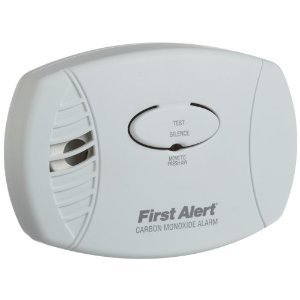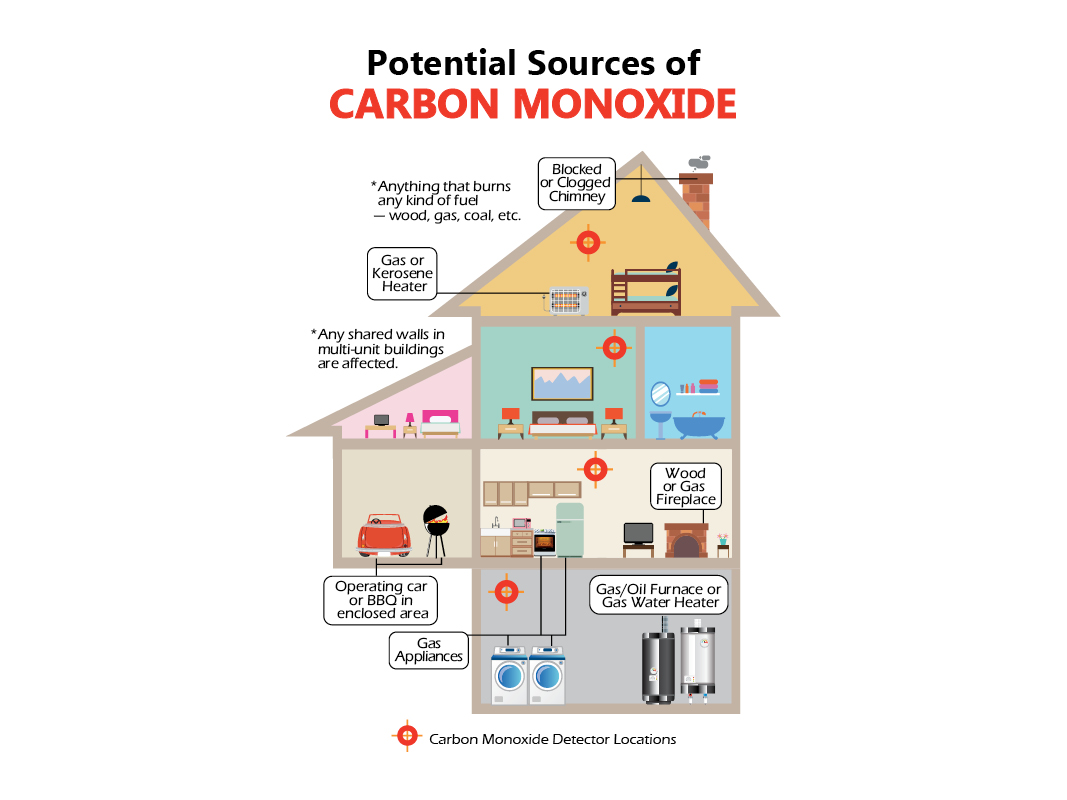SILENT BUT DEADLY – WHAT YOU NEED TO KNOW ABOUT CARBON MONOXIDE
Steamboat Sotheby’s International Realty and other community businesses rally to create a Carbon Monoxide Awareness task force.
Last May, Steamboat resident Jack Romick passed away in his sleep from carbon monoxide poisoning, when toxic fumes leaked into the house from the attached garage where the car inadvertently sat idling. In January, an elderly woman accidentally left her car running in an attached garage of a townhome complex. An adjoining unit at the other end of the building was equipped with carbon monoxide detectors that alerted first responders, who found the woman unconscious. She was lucky enough to survive.
As is often the case in a small down, the victims from both incidents had personal and familial ties to many, including many in the real estate community, who decided it was time to take action.
“Carbon monoxide as dangerous as smoke or fire, but even scarier because it’s invisible,” says Ulrich Salzgeber, Executive Director of the Steamboat Springs Board of Realtors. “It is odorless and tasteless, and the symptoms of exposure mimic those of a cold, the flu, or even allergies. That’s why it’s critical for everyone to have a carbon monoxide detector installed in their home. Without a detector in a home, there is no way to know about the presence of carbon monoxide until it’s too late.”
Steamboat Sotheby’s International Realty joined forces with several other local real estate companies and the Steamboat Springs Board of Realtors, as well as fire and rescue, police, gas companies and several others to create the Carbon Monoxide Risk Prevention Task Force, whose mission is to raise awareness and get carbon monoxide detectors in as many homes in Routt County as possible, through public outreach and education.
“There are a lot of misconceptions out there about carbon monoxide detectors and the need for them,” Salzgeber says. “People assume they’re expensive or complicated to install, or that they require an electrician, but these devices have come a long way in recent years. For most models, all you have to do is take it out of the box and plug it into an outlet, and the unit costs around 20 dollars.” Salzgeber says Steamboat Ace Hardware is offering $5 off as part of the CMPRT initiative, bringing the price of their detectors below 20 dollars, and the task force is working with LiftUp of Routt County to supply detectors at no cost to local low-income families. “Carbon monoxide poisoning and deaths are 100% preventable, and we want to do our part to prevent them from happening in the future,” Salzgeber says.
One of the task force’s first initiatives is to designate October as Carbon Monoxide Awareness Month. “We are looking for an army of volunteers to help us blanket Routt County and put a card on every door with information about the dangers of carbon monoxide, the sources that create it, and the $5 off coupon that can be redeemed at Steamboat Ace Hardware,” Salzgeber says. The task force also intends to create educational programs for local schools and other organizations who would benefit.
“The goal is to educate as many people as possible about the dangers of carbon monoxide poisoning and the need for every home in Routt County that needs a carbon monoxide detector to have one. Ultimately we hope to prevent any more unnecessary deaths from carbon monoxide poisoning in Routt County.”
Carbon Monoxide and You: What you need to know about carbon monoxide
• Most detectors cost less than $30 and plug into any electrical outlet, no installation required.
• Anything that burns any kind of fuel, whether it’s wood, coal, propane, or natural gas emits carbon monoxide. There are many more sources of carbon monoxide than people realize. Even if a home doesn’t have gas utilities or a fireplace, there are many other sources that can cause carbon monoxide to build up to toxic levels.
• Carbon monoxide moves through small cracks and holes in walls between adjoining units in a condominium or townhome building. So, what happens in one unit or attached garage can cause carbon monoxide to build up to toxic levels throughout the entire building.
• Household appliances, such as gas fires, boilers, central heating systems, water heaters, cookers and open fires that use gas, oil, charcoal, coal and wood are sources of carbon monoxide gas.
• Leaving a car in a closed garage with its engine running can produce deadly amounts of carbon monoxide within 10 minutes. With the ignition controls on many new models of cars and with how quietly the engines run, many recent instances of carbon monoxide poisoning have been the result of a car inadvertently being left running.
• Blocked flues and chimneys can stop carbon monoxide from escaping.
• Fumes from certain paint removers and cleaning fluids can cause carbon monoxide build up.
• The only way to detect carbon monoxide in your home is with a carbon monoxide detector.
How You Can Help
• Join the campaign! Help distribute awareness information in your neighborhood. CLICK HERE to sign up and for more information
• Make a donation to provide detectors to those in need
• Call 970.875.2457 for more information
Reproduced with permission from Steamboatsir.com





Links
Steamboat Areas
Popular Searches
Broker Associate
Popular Searches
Didn't find what you were looking for?